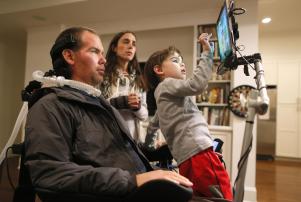When you work 28 years to bring a passion project to the screen, the end result can be a little dicey especially if a filmmaker is just too close to the material to do what is best for it. But if that filmmaker is Martin Scorsese you need not worry, and the film he has finally made from Japanese novelist Shusaku Endo’s 1966 book Silence from his own screenplay written with Jay Cocks, is a fascinating movie that explores faith, and its meanings, in the deepest of ways.

Endo himself was involved in writing director Masahiro Shinoda’s previous 1971 film version but this seems more a personal quest for Scorsese than that, and as I say in my video review above, Silence can be looked at as a companion piece to two earlier Scorsese films in the same realm, 1988’s The Last Temptation Of Christ and 1997’s Kundun, both films the result of Scorsese’s unending questions about his own relationship to his Catholic religion and the need to explore it as an artist.
Set in 17th century Japan, the film follows two Jesuit priests, Padre Sebastiao Rodrigues (Andrew Garfield) and Francisco Garrpe (Adam Driver) as they travel to Japan from their native Portugal in search of the fate of their mentor Christovao Ferreira (Liam Neeson), who is the subject of rumors saying he has Apostasized. Soon they are thrust into a society that attempts to get Christians to do just that, Apostasize or, in other words, rebuke their own religion. This includes authorities torturing Christians until, in this case, they put their foot on an image of Jesus or Mary, something seen in the film several times. Rodrigues, armed with a letter and no aversion to the idea of pain or martyrdom resists all of this, even as he sees unspeakable acts. His interaction with the Japanese man known as the Inquisitor (Issey Ogata) is fascinating. This is an authoritarian who doesn’t hesitate to carry out his torturing process on other Christians until he can force Rodrigues into renouncing his own faith. The title Silence comes from the Priests’ pleas to God, who does not appear to answer.
Scorsese’s beautiful-looking film runs two hours and forty minutes which actually is considerably shorter than earlier cuts that were well over three hours I am told. However, except for some brief passages that do drag a bit, it doesn’t feel long at all, and it is such a pleasure to see filmmaking on this level no matter what the length. And of course, it has the usual first rate production values you always see in a Scorsese film, including Rodrigo Prieto’s extraordinary cinematography, Dante Ferretti’s exceptional production design, and longtime Scorsese associate Thelma Schoonmaker’s expert editing.
Andrew Garfield, inhabiting the intense lead role of Rodrigues right on the heels of another torturous part in Hacksaw Ridge probably needs to do a romantic comedy next, but he is very fine, as is Driver, with both adapting to the challenge of playing 17th century Jesuit priests with complete conviction. Neeson is nicely effective in his few scenes, but the movie is completely stolen by Ogata, a terrific veteran Japanese actor who is Oscar worthy as the crafty Inquisitor and notorious persecutor named Inoue.
There is no question that this is a demanding film, not your ordinary holiday entertainment, but it is one that offers much in the way of exploring our own belief and faith, whatever that may be. In addition to the director’s own films, perhaps its closest cinematic cousin would be Pier Paolo Pasolini’s remarkably spare but powerfully spiritual 1964 film, The Gospel According To St. Matthew. Silence also provides a real eye into the soul of an iconic director who poured his heart into the making of a movie to which attention must be paid.
Producers are Emma Tillinger Koskoff, Randall Emmett, Barbara De Fina, Gaston Pavlovich, Irwin Winkler and Vittorio Cecchi Gori. Paramount releases today in select theaters before going wider on January 13.
Do you plan to see Silence? Let us know what you think.


